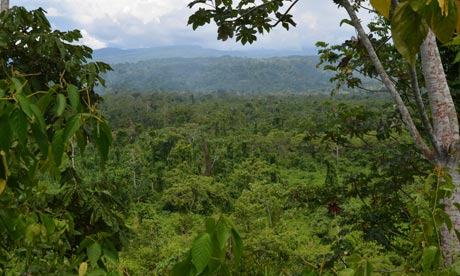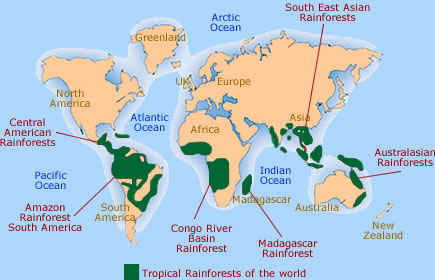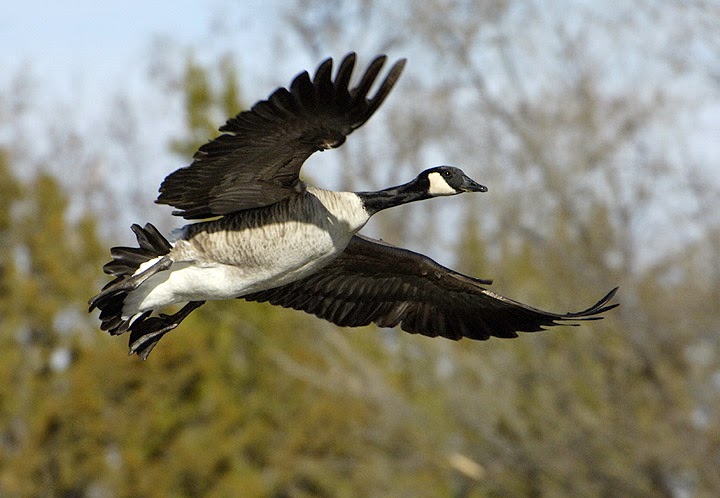Ultraviolet Radiation, an Environmental Stress
High levels of solar radiation is an environmental stress that can be incredibly detrimental to human survival when there is inadequate adaptation. Ultraviolet (UV) radiation can cause burns of the epidermis, which can cause a mutation of DNA resulting in skin cancer (particularly melanoma). Melanoma is deadly, killing approximately 8,000 people per year in the United States alone. In addition to cancer, the penetration of too much UV radiation into the skin can cause anemia by breaking down folate in the body. Folate is important to humans, and particularly important to pregnant mothers. A lack of folate can cause miscarriages and birth defects.
Short-term Adaptation
I don't really think there is a short term adaptation in response to UV radiation. The human body is not able to quickly adapt to the sunlight, it takes time for a skin tan to form. This makes overexposure to sunlight dangerous. What may be something close to short-term adaptation is the skin beginning to feel hot when exposed to too much sunlight. I can always feel when my skin is starting to burn, and common sense kicks in and says, "Get out of the sun!"
Facultative Adaptation
 In response to UV rays, humans, over time, have adapted by way of facultative adaptation. Facultative gene action monitors the environment (in this case, levels of UV rays) and adjusts the phenotypes of humans accordingly. When there are high levels of solar radiation present (like during summer) specialized cells called melanocytes produce melanin in response. Melanin acts as a shield against the sun rays, and results in a darker phenotype (suntan). Over thousands of years, humans have adapted to the level of solar radiation in different areas of the world. Those in areas closest to the equator (i.e. Africa and Australia) face particularly high levels of ultraviolet radiation. Because of this, humans with the most effective facultative adaption by way of creating melanin have survived over time and passed those strong genes on. Skin color goes hand in hand with this, as melanin is a pigment in determining skin color.
In response to UV rays, humans, over time, have adapted by way of facultative adaptation. Facultative gene action monitors the environment (in this case, levels of UV rays) and adjusts the phenotypes of humans accordingly. When there are high levels of solar radiation present (like during summer) specialized cells called melanocytes produce melanin in response. Melanin acts as a shield against the sun rays, and results in a darker phenotype (suntan). Over thousands of years, humans have adapted to the level of solar radiation in different areas of the world. Those in areas closest to the equator (i.e. Africa and Australia) face particularly high levels of ultraviolet radiation. Because of this, humans with the most effective facultative adaption by way of creating melanin have survived over time and passed those strong genes on. Skin color goes hand in hand with this, as melanin is a pigment in determining skin color.
A person's production of melanin is a developmental adaptation.
Developmental Adaptation
There are two types of melanin: pheomelanin and eumelanin. Pheomelanin is a lighter form, eumelanin being dark brown-black. Individuals that produce more eumelanin than pheomelanin are better adapted to living in a solar radiation rich environment and will have a much darker complexion than someone who produces primarily pheomelanin. Because of this, initial populations closest to the equator (roughly within 20 degrees) were dark skinned. As populations radiated from the equator, their levels of melanin altered in order to be more suited to the environment. Populations far north of the equator have much fairer skin (high levels of pheomelanin) and are more likely to burn and peel than they are to tan. Because some UV absorption is important to the human body (needed for the production of vitamin D) populations that live in areas with less solar radiation need to produce lower levels of melanin. Vitamin D is vital in the body's ability to process calcium. If a person produces too much melanin in an area with little sunlight, they face the possibility of developing diseases like rickets and osteoporosis. Because of this, humans in these areas have adapted to a lower melanin production. However, since these same individuals can face overexposure to the sun due to lowered levels of melanin, they are more apt to develop skin cancer.
Cultural Adaption
Benefits
I think there are definitely future benefits to studying human variation from this perspective across environmental clines. I also think that the information we gather in this area has helped us in at least one way: sun screen. We understand that skin less able to adapt to high levels of ultraviolet radiation need more protection than their body is capable of producing. Scientists developing alternative methods of artificially shielding skin from harmful rays have helped to save lives by preventing malignant skin cancers. In addition to this, studying human variation from this angle could help us in the future treatment and prevention of diseases like rickets and anemia. For example, in studying a lack of rickets in people with light skin, scientists and doctors might better understand the level of sunlight needed to avoid the development of this disease.
A Better Way to Understand Variation
I think race should be used only to categorize groups of humans with similar adaptations to similar environments. By classifying race in this manner, we can see how humans have adapted over the years and possibly predict future adaptations in response to particular environmental stresses (like sunlight). By studying the influence that environments have on human populations over time, we could start to detect patterns of adaptations. Certain human adaptations (i.e. skin color) can be permanent. Other adaptations are only present while exposed to a particular environmental stress, as evident by humans ability to tan during the summer due to prolonged exposure to the sun. Because the human race's ability to adapt to environmental stresses is present in all humans, it is apparent that we are connected on a more basic (genetic) level than we are by an outward difference in phenotype. Studying the environmental influences and human response to those environments (our adaptations) can provide evidence that groups of people are not entirely different species. While we have a long way to go before we can solve the problem of racism, studying human phenotype differences in this manner (based on adaptation to differing environments) could help to advance us culturally. It could help us to become more accepting of one another rather than passing judgements based on someones skin tone.
















.PNG)



